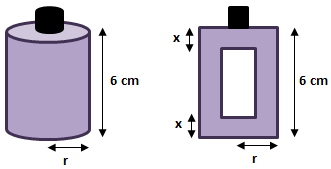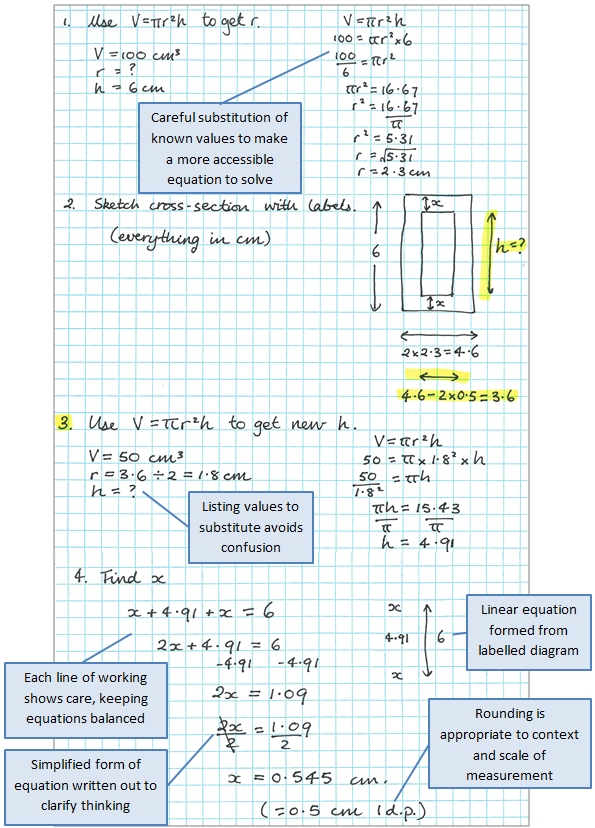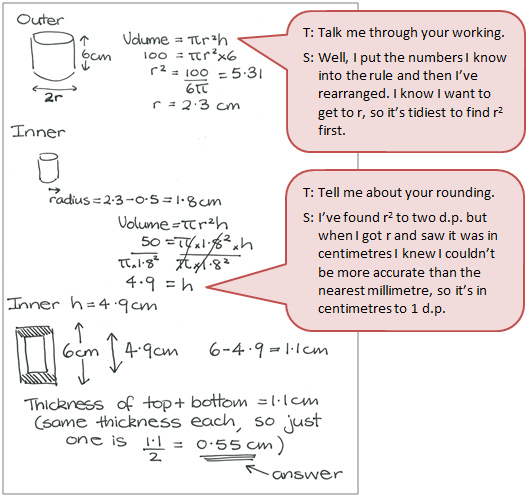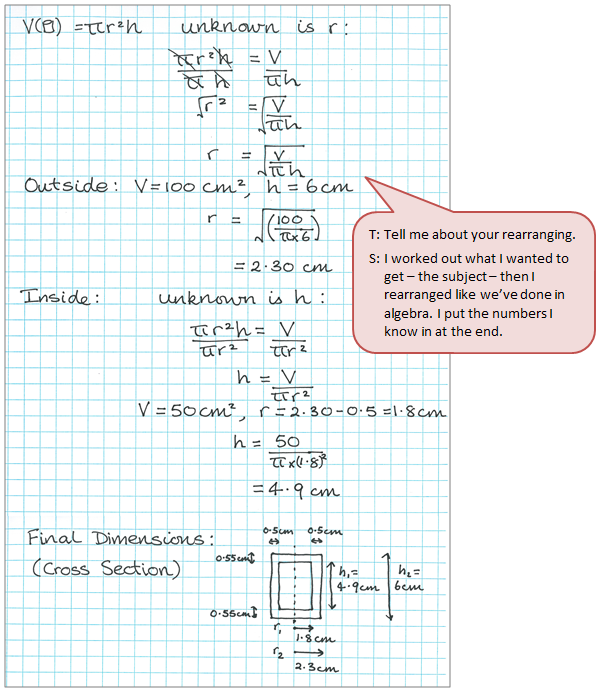Marketing Tricks
The purpose of this activity is to encourage students to use algebraic techniques when solving a measurement problem.
This activity assumes the students have experience in the following areas:
- Finding the areas of circles and the volumes of prisms, and cylinders as a special case.
- Working with metric units of volume and area, particularly square centimetres (cm2) and cubic centimetres (cm3).
- Forming algebraic equations to model situations.
The problem is sufficiently open ended to allow the students freedom of choice in their approach. It may be scaffolded with guidance that leads to a solution, and/or the students might be given the opportunity to solve the problem independently.
The example responses at the end of the resource give an indication of the kind of response to expect from students who approach the problem in particular ways.
Task: A cosmetic company wants to sell a bottle of perfume that is cylindrical and holds 50 mL (50 cm3) of scent, but looks like it holds 100 mL. The glass bottle will stand 6 cm high (not including the atomiser) with the side thickness of the glass being 0.50 cm.
Find x, the thickness of the top and bottom of the perfume bottle.
The following prompts illustrate how this activity can be structured around the phases of the Mathematics Investigation Cycle.
Make sense
Introduce the problem. Allow students time to read it and discuss in pairs or small groups.
- Do I understand all the words, and symbols, or should I ask for help?
- Can I rephrase the problem in my own words?
- Can I make sense of the diagrams of the situation?
- What information has been given and what is missing?
- Is this problem alike any others I have worked on before?
Plan approach
Discuss ideas about how to solve the problem. Emphasise that, in the planning phase, you want students to say how they would solve the problem, not to actually solve it.
- What are the maths skills I need to work this out?
- What else do I need to know to get started? Where will I find the information?
- How could I represent this problem using numbers, pictures, graphs, tables, or materials? (An algebraic equation.)
- What tools (digital or physical) could help my investigation?
Take action
Allow students time to work through their strategy and find a solution to the problem.
- Have I recorded my ideas in a way that helps me to see patterns and relationships?
- Am I finding out some useful information or do I need to try something else?
- How do my results look different to others? Why could this be?
- Does my solution make sense and answer the question? Does it match my estimation?
Convince yourself and others
Allow students time to check their answers and then either have them pair share with other groups or ask for volunteers to share their solution with the class.
- What is my solution? Does that match the solutions of others?
- Show and explain how you worked out your solution.
- Which representation (text, table, graph, numbers, diagram, equations) will be easy for others to understand?
- Which ideas would convince others that my findings answer the investigation question?
Examples of work
Work sample 1
The student finds unknowns that lead to the solution of the problem.
Click on the image to enlarge it. Click again to close.
Work sample 2
The student finds unknowns that lead to the solution of the problem.
Click on the image to enlarge it. Click again to close.
Work sample 3
The student finds unknowns that lead to the solution of the problem, independently and with appropriate accuracy.



